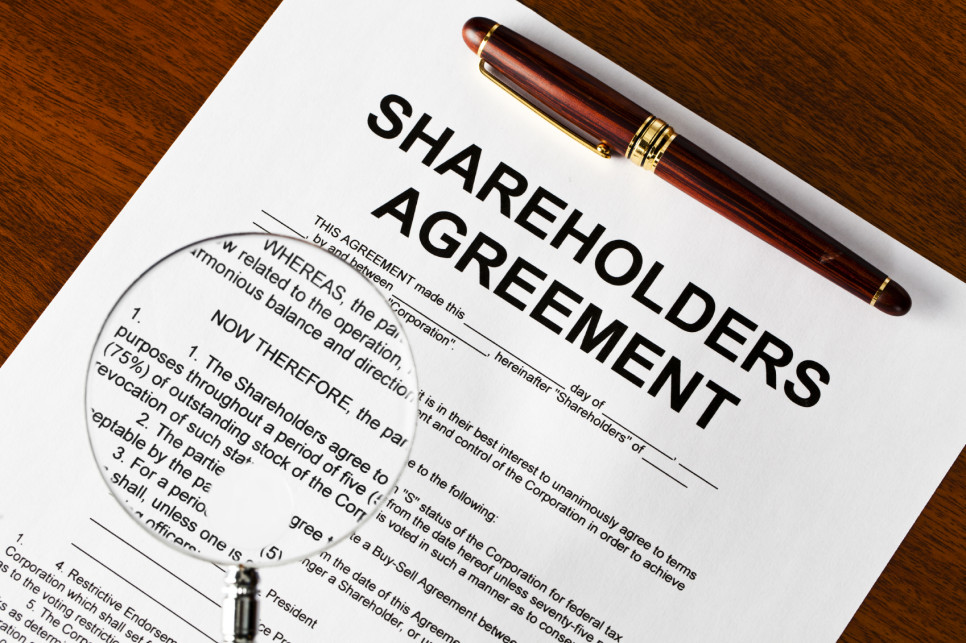In this blog post, Aishwary Bajpai, a student pursuing his LL.B (4th year) from College of Legal Studies, University of Petroleum and Energy Studies, Dehradun and a Diploma in Entrepreneurship Administration and Business Laws from NUJS, Kolkata, discusses about the various steps that need to be taken while removing a shareholder of a company.
A company may decide to add or remove a shareholder. These changes should be reflected in the Companies share register and notified to the Registrar of Companies. A company can, however, choose to update this information on the Companies Office website at any time.
When a corporation wishes to remove a shareholder from a business, there are a few specific steps that they should take. These steps are dictated by the nature of the relationship between the business and the shareholder and the corporate archives.
When a Shareholder Is an Employee of the Company
The controlling owners can for the most part fire shareholders who do not have control of the business. The same procedure is used regardless of the fact that the shareholders are on the Board of Directors. A vote may be required to remove someone from the Board of Directors. If the employee enters into an employment agreement with the business, this contract must be closely followed to avoid potential litigation. However, if there is no employment contract, the employee is probably an at-will employee under State law. Although an at-will employee can be fired for any reason so long as it is not an illegal reason, having cause to fire a shareholder often helps solidify the business’ legal position.
Purchase of Shares of the Terminated Shareholder
Once a shareholder is terminated, the controlling shareholders may choose to buy back the shares of the withdrawing shareholder. There may be a shareholder agreement that gives the remaining shareholders this right. Alternatively, this right may be provided in a buy-sell agreement. Additionally, the right must be founded on the current circumstances, such as the agreement specifically stating that this right is activated upon the employee’s termination or upon a dispute arising between the shareholders.
The controlling shareholders might need to buy back the remaining shares for various reasons. Staying as a shareholder more often than not implies that this individual has some force and connection to the organization. For instance, he or she might have the capacity even now to elect the directors, get profits or take an interest in shareholder meetings.
On the off-chance that the controlling shareholders choose to buy out the leaving shareholder’s shares, the following decision is at what cost to pay for them. The meetings will need to guarantee that the cost is reasonable for all meetings. The shareholder agreement may determine a technique for this procedure, for example, having a free evaluation directed or utilizing a particular account.
Non-Compete Agreements
As part of the buy-back process, the controlling shareholders may impose a non-compete agreement or covenant. This can just happen if the departing shareholder consented to it and after the controlling shareholders have completed a bona fide buy-back of shares. Agreements of this nature are often disfavored by the courts as they are normally seen as being a restraint on free trade. However, courts may enforce them if the terms of the agreement are reasonable in scope, time and geographic restrictions.
 Even if a non-compete agreement is not imposed, the business may at present need to be cautious on how the departing shareholder leaves the business. For example, the business may set parameters around how the leaving shareholder speaks with referral sources, clients, and different workers.
Even if a non-compete agreement is not imposed, the business may at present need to be cautious on how the departing shareholder leaves the business. For example, the business may set parameters around how the leaving shareholder speaks with referral sources, clients, and different workers.
Oppressive Terms
Numerous states have additional laws on how minority shareholders must be dealt with. These rules are usually contained within anti-oppression statutes. These rules may state that controlling shareholders are precluded from utilizing their corporate power in a manner that only benefits themselves or unjustifiably harms minority shareholders. Under such regulations, controlling shareholders may be prohibited from firing shareholders who have a genuine expectation of continued employment without cause.
If a corporation does oppress a minority shareholder, the shareholder may have specific legal remedies. For example, he or she may be able to pursue a tort cause of action under the legal theory of breach of fiduciary duty. The second possible remedy is to ask the court to dissolve the business involuntarily. Under this second cause of action, if a shareholder or group of shareholders owns enough of the business’ stock, they can ask that the business is dissolved. This request is made on the allegation that the majority is committing unfair practices that unduly and financially burden minority shareholders. If the court finds in favor of the minority shareholders, it will often order that the controlling shareholders buy out minority shareholders.
Oppressive terms are often considered a just and equitable ground for winding up of a company under Section 271(1) of the Companies Act, 2013.
How to Remove a Shareholder from a Small Company?
In small companies, shareholders all own a part of the business, but there are times when it’s desirable to remove that ownership. To do so, owner’s shares have to be brought. This requires a majority resolution from the management within the company, either the Board of Directors or the body of shareholders themselves (member’s resolution). The shareholder agreement created with the formation of the company usually provides instructions for shareholder removal, but in the event when it doesn’t, the company may do so through a resolution. The following steps have to be followed:
- Step I: Checking the shareholder agreement created at the inception of the small company for any sections detailing the procedure for removal of a shareholder is necessary. It is needed to find details about the buyout of shares, and precisely whose approval is necessary for the removal, either by a vote of the Board of Directors or by majority shareholder vote. It may usually be through a resolution.
- Step II: A resolution shall be presented for the buyout of the shareholder either to the Board of Directors or at the next meeting, depending on shareholder agreement. There can or cannot be any specific manner.
- Step III: A meeting of the Board of Directors or the shareholders shall be called, and the resolution should be presented in the same.
- Step IV: Requisite votes are needed for the resolution. In case, the resolution passes, the shareholder’s agreement has to be followed in the purchase of the shareholder’s stock. Typically this is a purchase by the company itself, converting the shares into treasury stock, or purchase by other shareholders already holding an interest in the corporation.
- Step V: It has to be resolved during the meeting that the Board of Directors also vote on the removal of the shareholder from any posts within the corporation he may currently hold. This would again require a majority vote from the board as well. A replacement should be made after the removal of the shareholder.
- Step VI: In case, the shareholder’s agreement does not provide for the removal of a shareholder; legal steps must be taken by the laws covering the removal of the shareholder.
 Serato DJ Crack 2025Serato DJ PRO Crack
Serato DJ Crack 2025Serato DJ PRO Crack











 Allow notifications
Allow notifications



